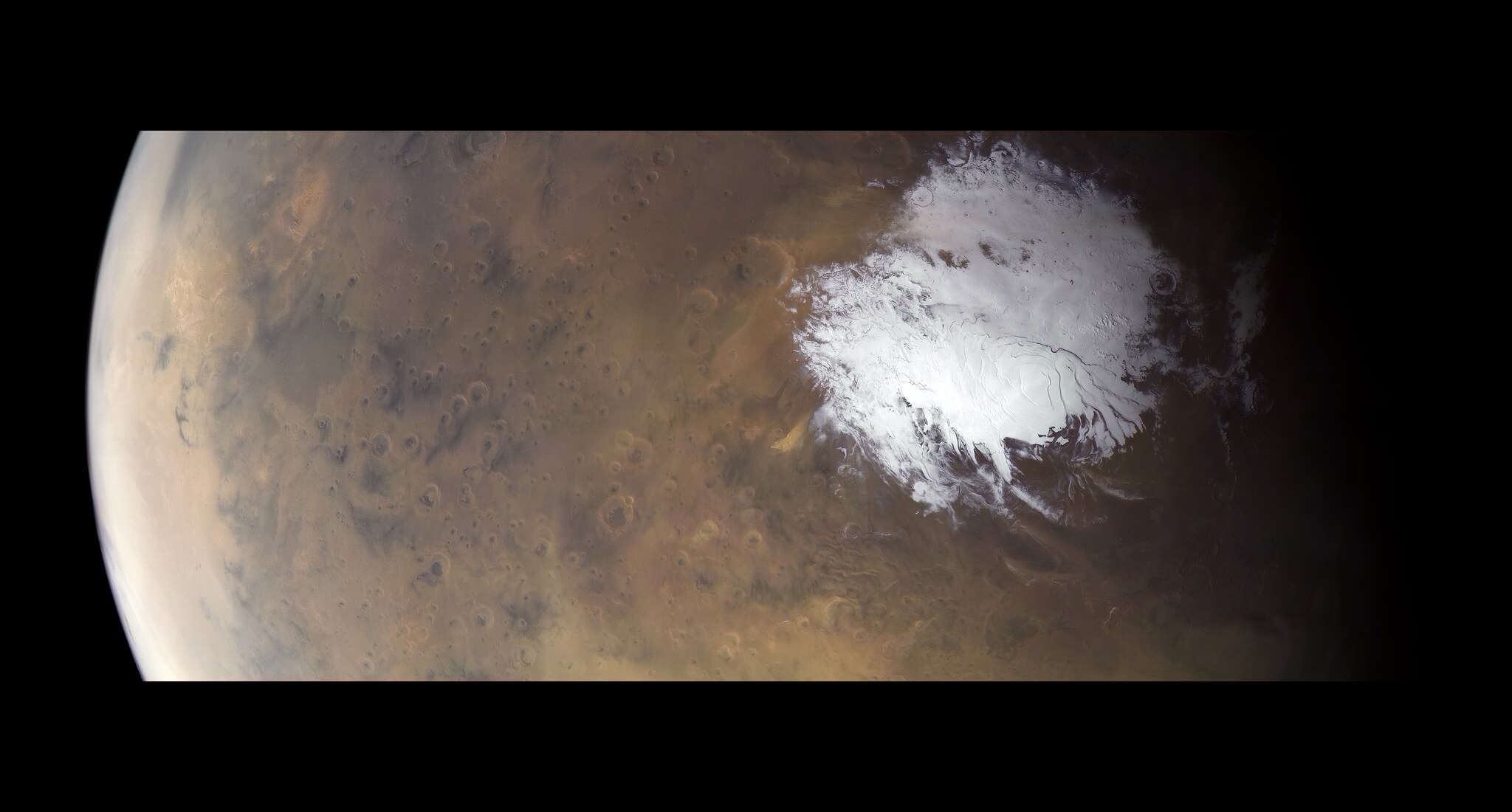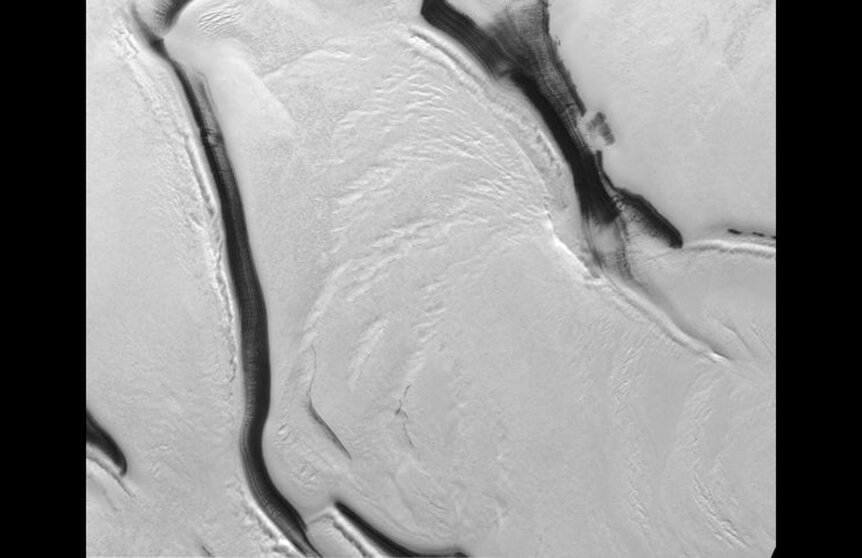Create a free profile to get unlimited access to exclusive videos, sweepstakes, and more!
Dry ice glaciers are on the move at the south pole of Mars
New research shows frozen carbon dioxide glaciers exist at the Martian south pole.

Every now and again some Mars news comes out that reminds me that Earth and our rusty neighbor have a lot of things in common.
Mars is very different than Earth, of course; there’s no liquid water on the surface, the atmosphere is incredibly thin and almost entirely carbon dioxide, it’s cold, it has huge extinct volcanoes, and no tectonic plate action. The differences are legion.
But it also has many features that remind me of home. Sedimentary layers in craters that look like they were transported from Utah or New Mexico. Dust devils, river beds, depositional river deltas, and more.
But one thing I wasn’t aware of is that Mars used to have and may still have glaciers. New work just published makes a pretty convincing case that glaciers are on the move today at the Red Planet’s south pole [link to paper].
A glacier is a huge mass of ice that can flow due to the pressure caused by its immense weight on the ice at its base. An ice cube sitting on very cold ground is pretty solid and won’t flow, but pile up enough ice and the sheer weight will cause the structure of the ice at the base to shift, with crystals able to shear and move past one another. On Earth, water ice glaciers can also create enough pressure that the ice at the base can melt and turn into liquid water, making flow easier.
Mars is different, though. It’s so cold there that water ice is much more rigid than it is on Earth, so it doesn’t shear as easily, or at all. A mountain of ice that would flow on Earth would be pretty solid on Mars. But carbon dioxide ice, called dry ice, freezes at a much lower temperature and so is still able to glaciate at Martian temperatures, even at the poles. It can flow up to 100 times faster than water ice on Mars. There’s evidence that the north pole on Mars once had glaciers in the past, though none exists today.
The south Martian pole is different. It gets colder there in the winter because southern winter is also when Mars is farthest from the Sun on its elliptical orbit, and warmer in the summer because it’s closer to the Sun. This makes the structure there a bit complicated.
There’s some dry ice at the south pole that persists even through summer, and is called the South Polar Residual Cap. That layer is only a few meters thick and sits on top of a much larger and deeper cap of water ice that extends for quite a way from the pole, but is also under a layer of red dust that hides it from visible light imagery. That water ice is many kilometers deep in places.
However, some orbiting Mars probes have radar that can penetrate the ground, and the radar reflection sent back to the probe can reveal what kinds of structures are under the surface, including the difference between water and dry ice. I’ll note that interpreting those results can be tricky sometimes.
Still a few years ago radar data indicated there was actually quite a bit of frozen carbon dioxide under the austral Martian surface, too. And by quite a bit, I mean it: It reaches a kilometer deep in places, and scientists measure a total amount of at least 16,500 cubic kilometers, enough to make a dry ice cube 25 kilometers on a side. The total mass is a staggering 2.7 trillion tons. At least. That’s equivalent to the total amount of carbon dioxide currently present in the Martian atmosphere*.
But how did it get there? Earlier attempts to explain it relied on the fact that in the past, the axial tilt of Mars was lower than it is today, meaning the spin axis of the planet was closer to being perpendicular to its orbital plane — as a comparison, Earth and Mars today are both tilted by roughly 24°; that’s why globes of Earth are always displayed canted. Just so’s you know, this is called a planet’s obliquity.
So, in the past the poles of Mars were colder due to this lower obliquity, and in theory could build up more dry ice. However, in the new work, the scientists show that this can’t actually work. Using updated physical models of Mars including topography, temperature, and the like, they show that atmospheric deposition — frost and snow buildup — isn’t sufficient to explain the amount and depth of carbon dioxide ice at the Martian south pole, nor how it’s distributed.
Including glacial flow in the model, however, shows that the movement of dry ice can explain all this. In fact the dry ice is found in basins — large, round depressions in the ground, which is why it can be so thick — and the slopes of the basins helps guide the dry ice into them.
Moreover, this thick deposit of dry ice has persisted for at least half a million years, even though in summers and warmer periods the top layers can be lost as the dry ice sublimates; that is, turns from solid directly to gas. And the part that I think is the most amazing is that the models show those glaciers are still flowing today, right now, though more slowly than they have in the past.
When Earth and Mars are in the parts of their orbits where they are at their closest, the small red world is easier to observe in telescopes. I’ve seen the south polar residual ice cap many times, a shining white dot in a ruddy expanse of rusty dusty planet. The color of Mars is literally unearthly, but those polar caps remind me of home… and now we know there are glaciers on the move there even as we watch. It’s an even a stronger reminder of home. At least for now.




























